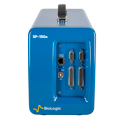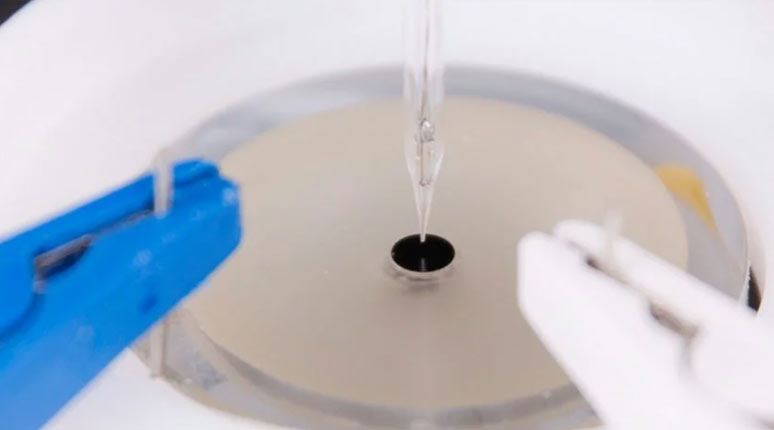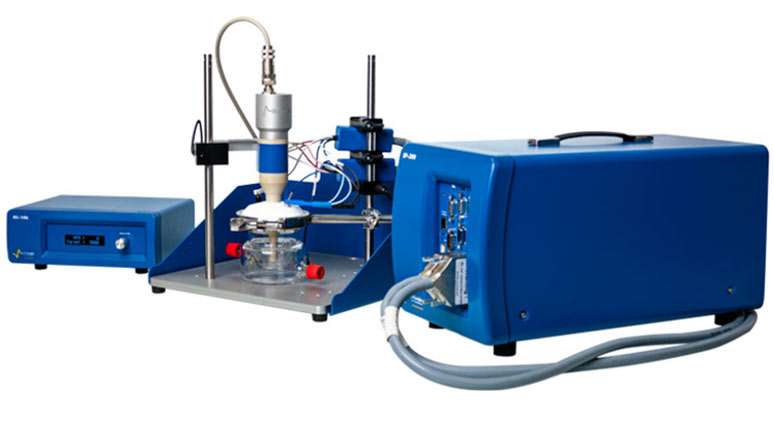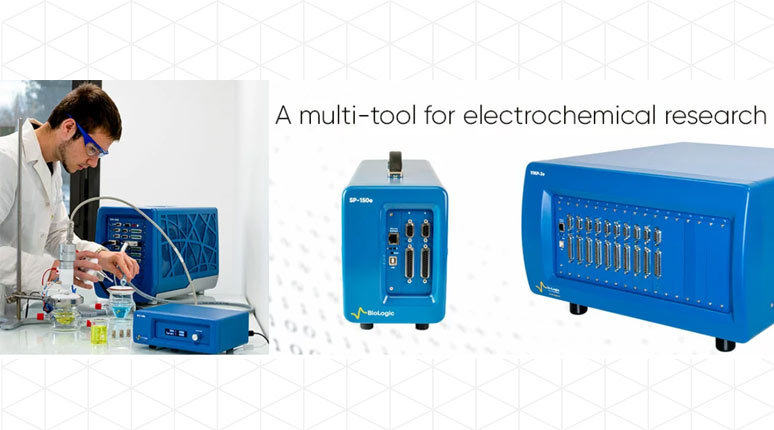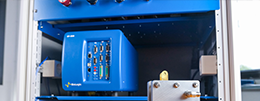Fundamental Electrochemistry Solutions.
Precision electrochemical instrumentation for fundamental research and advanced applications.
Comprehensive solutions for fundamental research and advanced applications.
Fundamental electrochemistry serves as the cornerstone for many important application areas. This research encompasses multiple scales and approaches, requiring sophisticated instrumentation and advanced analytical tools. Explore typical configurations from our comprehensive, modular portfolio, then connect with our sales experts to design the perfect solution.
Local Investigations
“I need local electrochemical characterization to resolve spatial variations in electrode activity.”
With these studies you can pinpoint exactly what is occurring at a local level, allowing you to understand heterogeneous surfaces and interfaces.
Bulk Investigations
“I want to understand bulk behavior to optimize electrochemical systems.”
Bulk electrochemical studies help you to understand electrochemical processes at a larger scale, providing essential insights into the fundamental principles governing thermodynamics, reaction kinetics, and mass transport phenomena.
Coupled Measurements
“I need multi-technique approaches to bridge electrochemistry with structural, optical, and chemical insights”
For a full understanding of the electrochemical system you may need coupled, or hyphenated techniques. In these cases, coupling electrochemistry and another technique, such as spectroscopy, microscopy, or QCM, can be indispensable.
Need a quotation?
Request a quote and take advantage of our personalized advice and get the data you need to make informed decisions.
FAQ.
When should I consider using pulsed techniques (DPV, SWV) instead of linear sweep voltammetry? Which technique should I use for detecting reactants at very low concentrations?
Use pulsed techniques when analyzing low concentrations (sub-μM), or when baseline resolution between peaks is challenging. They offer improved sensitivity and discrimination against charging current. Learn more here.
EC-Lab software offers Normal Pulse Voltammetry (NPV), Differential Pulse Voltammetry (DPV) and Square Wave Voltammetry (SWV). And for even more information and guidance your local BioLogic representative is here to help.
How do I choose the right reference electrode for my experiment?
For selecting the reference electrode that matches your experimental system, you need to consider your electrolyte composition, the pH range of your media, the temperature range and possible interference with your analyte. Guidelines are provided here and for even more information and guidance your local BioLogic representative is here to help.
How can I combine potentiometry with other techniques?
Nearly all research requires the combination of different devices to get as much information as possible about an experimental in-situ / in-operando setup. Therefore, BioLogic offers potentiostat integration, synchronization, and interfacing with other devices. For example, the BioLogic Spectrometer system SEC2020 is a spectroelectrochemical kit able to operate under transmittance, fluorescence, and irradiance modes that can be synchronized with our potentiostat to characterize intermediate species created during a redox process.Learn more about our solutions for coupling with external devices with EC-Lab software here, and our different partnerships to develop cutting-edge solutions.
For the optimal solution, we strongly recommend contacting our sales teams to discuss how we can support your current projects, they can provide personalized recommendations based on your application needs.
Does BioLogic offer any simulation tools?
BioLogic offers tools to simulate Cyclic Voltammetry (CV) and Electrochemical Impedance Spectroscopy (EIS) experiments within the EC-Lab® software.
CVSim is a powerful CV simulation tool which can be used to simulate the effect of different parameters on a CV. A series of Learning Center articles has been produced for CVSim, we suggest starting with CVSim as a learning tool. I. Diffusion coefficient.
ZSim is a powerful EIS simulation tool which can be used to simulate the effect of different parameters on an EIS experiment. A series of Learning Center articles has been produced for ZSim, we suggest starting with ZSim and ZFit as learning tools. Part I – Acidic corrosion.
 Read the article
Read the articleSECM101: An Introduction to Scanning Electrochemical Microscopy
An introduction to Scanning Electrochemical Microscopy (SECM)
 Read the article
Read the articleThe RRDE as a pH probe in situ
The Rotating Ring Disk Electrode (RRDE) Ring can be used as a potentiometric or amperometric in situ pH probe. This is extremely useful to study electrochemical reactions that involves OH- or H+ ions.
 Read the article
Read the articleWhat is a potentiostat and its use in Science & Industry (Electrochemistry Basics Series)
What is a potentiostat? An article detailing every aspect of this versatile electrochemical multitool. Covers Potentiostat functionality and operation, the history of the potentiostat, uses and applications and the future of the potentiostat
 Read the article
Read the articleWhat is CV? A comprehensive guide to Cyclic Voltammetry
A highly detailed article relating to Cyclic Voltammetry and associated EC-Lab techniques


